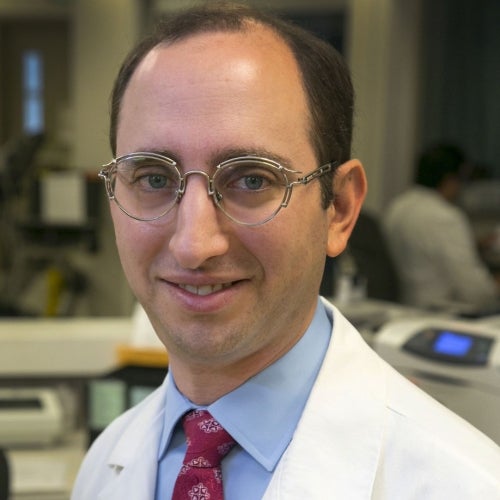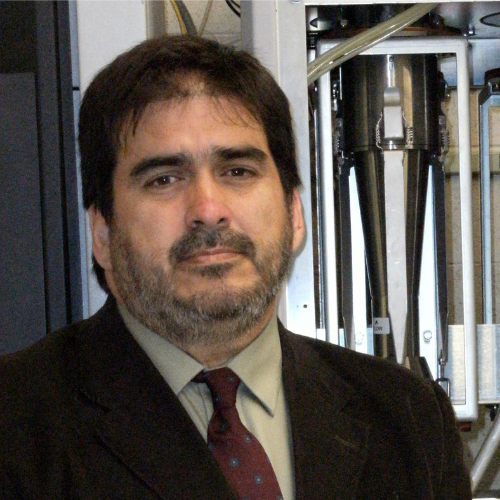Pesticide regulation in California is flawed, UCLA report says
A new report shows that in at least one case, the system failed by approving a pesticide called methyl iodide for use on strawberries.

Approximately 30 million pounds of fumigant pesticides are used each year on soil that yields valuable California crops — strawberries, tomatoes, peppers and the like — in an attempt to control pests. Responsibility for the safety of pesticides must be evaluated and approved by the California Department of Pesticide Regulation in a process known as registration.
A new report issued by UCLA's Sustainable Technology and Policy Program, a joint program of the Fielding School of Public Health and the School of Law, shows that in at least one case, the system failed by approving a chemical called methyl iodide for use on strawberries.
Methyl iodide is a neurotoxicant and is carcinogenic. It is known to cause lasting neurological damage, including psychiatric symptoms and chronic movement disorders resembling Parkinson's disease. It is also a developmental toxicant that has been shown to impair fetal development and cause fetal death at low doses.
Combined with a second fumigant, chloropicrin, methyl iodide was introduced as a substitute for methyl bromide, a widely used pesticide slated for phase-out by 2015 due to its ozone-depleting properties. While the methyl iodide–chloropicrin mixture was a promising alternative in terms of performance, it raised substantial human health issues. The Department of Pesticide Regulation approved its use in December 2010, despite opposition from scientists, environmental organizations and farmworker groups.
The UCLA report, "Risk and Decision: Evaluating Pesticide Approval in California," identifies a variety of deficits in the agency's registration process and makes recommendations to improve pesticide regulation in California.
Using the approval of methyl iodide as a case study, the authors examined the risk-governance approach used during the approval process, comparing it to best practices in regulatory settings, including risk-assessment practices developed by the National Research Council. They drew upon letters, hearing transcripts, reports, internal Department of Pesticide Regulation memos and other documents and analyzed the scientific, social and legal dimensions of pesticide registration in California.
In addition to highlighting the deficits in the agency's process, the report makes a number of recommendations aimed at better protecting public health, including:
- Require the development of comprehensive testing data-sets tailored to the proposed pesticide. In the methyl iodide case, no study on developmental neurological toxicity was conducted, and there were not sufficient studies available to determine the potential groundwater impacts and anticipated levels of air emissions of methyl iodide from farm fields.
- Perform cumulative risk assessments to consider all active ingredients in the pesticide. Here, the authors say, the Department of Pesticide Regulation focused solely on the risks of methyl iodide rather than the methyl iodide–chloropicrin mixture that would be used in practice. (Chloropicrin vapor is highly poisonous when inhaled and was used as a chemical weapon during World War I).
- Better utilize the peer-reviewed literature and examine more carefully the agency's own risk-assessment methods, including the assumptions used in modeling exposure and risk.
- Utilize risk-assessment results from agency's own staff scientists, as well as recommendations made by an outside scientific review committee. Instead, the authors say, the agency's management ignored these recommendations and increased the permissible exposure levels developed by their own scientists by a factor of 100. (At the time of the methyl iodide review, the scientific review committee was chaired by John Froines, an author of the UCLA report and a professor emeritus of environmental health sciences at UCLA's Fielding School).
- Proactively engage a range of stakeholders — including farmworker groups, environmentalists and the local community — in the registration process.
- Engage in meaningful review of safer chemical and non-chemical alternatives to the proposed pesticide.
"Good science, carefully used, is central to good decision-making," said Froines. "In this case, despite the laudable efforts of the Department of Pesticide Regulation staff scientists, a variety of factors stood in the way of that. Data gaps, narrow framing of the scientific issues and unrealistic assumptions regarding exposures stand out. These are issues that must be addressed to ensure appropriate pesticide regulation in California."
"Pesticide regulation in California is flawed," said UCLA School of Law professor Timothy Malloy, a faculty director of the Sustainable Technology and Policy Program and one of the report's authors. "Until we find safer alternatives to chemical pesticides, it is extremely important that the evaluation of new pesticides is thorough. If consumers, workers and the environment are to be protected from the adverse effects of pesticides, the approval process needs to be based on comprehensive data, objective evaluation and meaningful participation of all relevant parties."
In March 2012, the manufacturer voluntarily pulled methyl iodide products from the market, citing issues of economic viability. The withdrawal preempted an impending ruling by an Alameda County Superior Court judge that regulators broke state law in approving the use of methyl iodide.
For video comments from Froines and Malloy, please see https://vimeo.com/74982284.
Other authors of the study included Susan Kegley of the Pesticide Research Institute and Sarah Kobylewski, Ph.D., who was a doctoral candidate at the Fielding School at the time of the study and is now an AAAS Science and Technology Policy Fellow.
Funding for the study was provided by the Clarence E. Heller Foundation.
The Sustainable Technology and Policy Program, a joint undertaking of the UCLA School of Law and the Fielding School of Public Health, is an interdisciplinary research and education program. Its mission is to support the development of effective, balanced chemical policies, and the spread of safer chemicals and alternative manufacturing processes in the marketplace. STPP brings together researchers from across the UCLA campus and beyond with non-governmental agencies, policymakers and businesses in a unique, action-oriented initiative.
UCLA School of Law, founded in 1949, is the youngest major law school in the nation and has established a tradition of innovation in its approach to teaching, research and scholarship. With approximately 100 faculty and 1,100 students, the school pioneered clinical teaching, is a leader in interdisciplinary research and training, and is at the forefront of efforts to link research to its effects on society and the legal profession.
The UCLA Fielding School of Public Health, founded in 1961, is dedicated to enhancing the public's health by conducting innovative research, training future leaders and health professionals from diverse backgrounds, translating research into policy and practice, and serving our local communities and the communities of the nation and the world. The school has 650 students from more than 35 nations engaged in carrying out the vision of "building healthy futures in greater Los Angeles, California, the nation and the world."
Faculty Referenced by this Article

Industrial Hygiene & Analytical Chemistry

Associate Professor for Industrial Hygiene and Environmental Health Sciences

Dr. Hankinson is a Distinguished Professor of Pathology and Laboratory Medicine, and of EHS, and Chair of the Molecular Toxicology IDP































